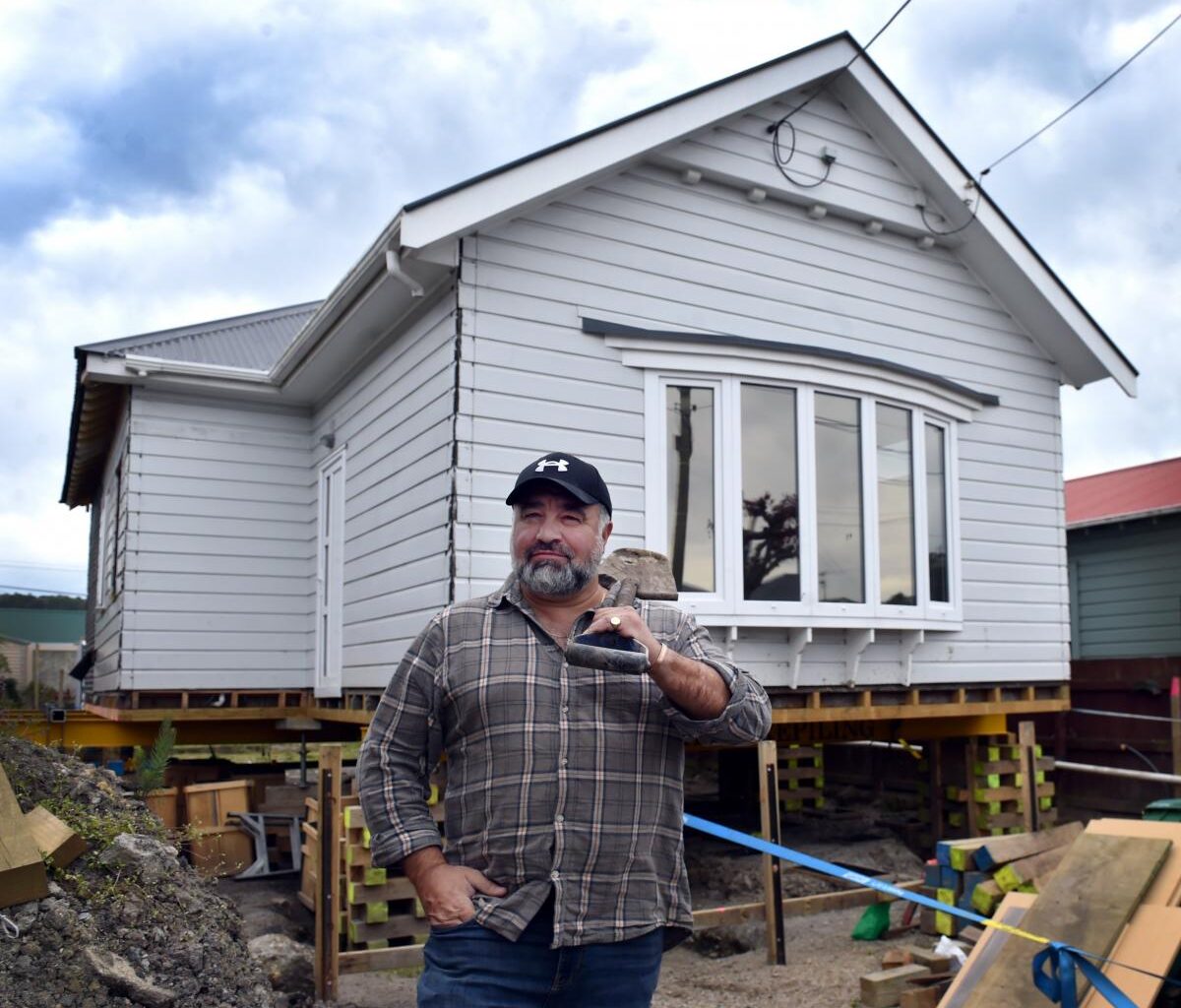Housing has started going up in South Dunedin.
They are literally being raised by up to a metre to protect them from flooding by future sea-level rise.
Studies have shown about half of the buildings in South Dunedin are at risk of flooding, and the number is expected to increase to nearly 70% by 2100, due to climate change and other factors such as rising groundwater.
While the Dunedin City Council is still searching for plans to ameliorate the flooding problem, some homeowners in the suburb are taking control of the situation themselves by putting their abodes on higher piles.
Southern Repiling (Dn) Ltd director Dwayne Hubac said he had a growing waiting list of South Dunedin homeowners in flood-prone areas who wanted to keep their feet dry and protect their houses for at least another century.
One in Baker St was high above the ground yesterday and will be for the next few weeks while Mr Hubac and his team put piles underneath, to raise the house by nearly a metre.
“It’s the first of these flood-zone houses in South Dunedin to be done.
“It will be on 90cm piles, which is quite a lot higher.
“A lot of people probably don’t realise that you can actually save these houses and lift them in the air and give them a new lease of life.
“This should give people confidence that they can stay in their house, long into the future.”
Mr Hubac said depending on the type of house and where it was located, it could cost between $100,000 and $200,000 to raise it.
Some of the houses were nearly a century old and quite beautiful — definitely worth keeping for the history of the area and well worth the cost, he said.
“In St Clair, South Dunedin, St Kilda and lower Musselburgh, there’s some quite nice double bay villas and bungalows all through there.
“Obviously, it’s affordability with some people, as to whether they can do it or not.
“I think you’ve got to look at it as a long-term thing.
“The insurance companies now are starting to get a bit more particular about it and saying, ‘well, hey, you’ve actually got to raise them because you’re in a flood zone’.
“Eventually, they may not insure you any more.”
He said the company had systems that could lift most houses, no matter whether they were brick, rough-cast or wooden.
“You can do brick houses, but you have to take the brick cladding off it and lift the framework up, then maybe look at a new cladding system.”
Mr Hubac said he had gained extensive experience with raising houses in Christchurch, following the 2011 earthquakes.
The houses could be lifted by up to 3m, and he could design the foundations with an engineer to suit the house.

